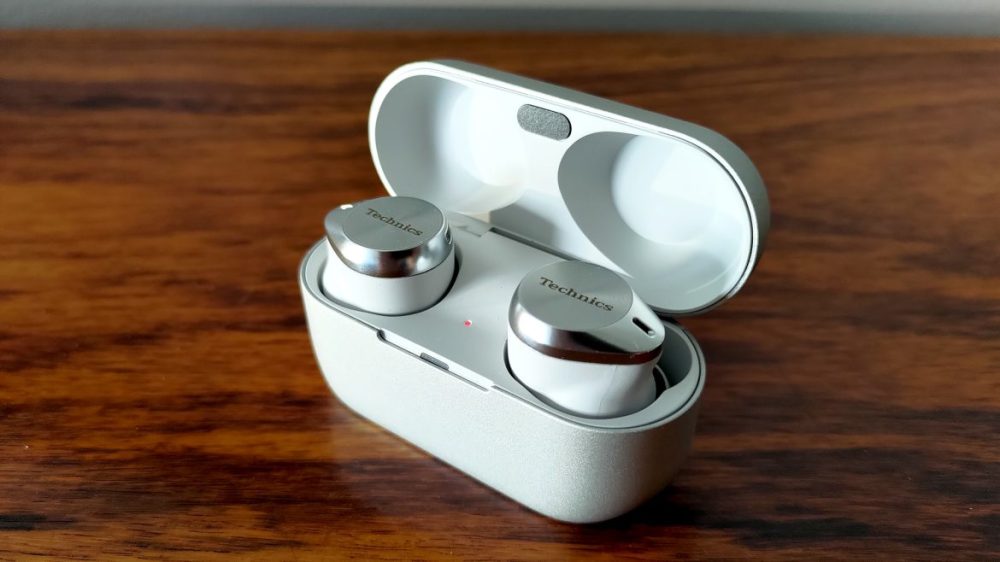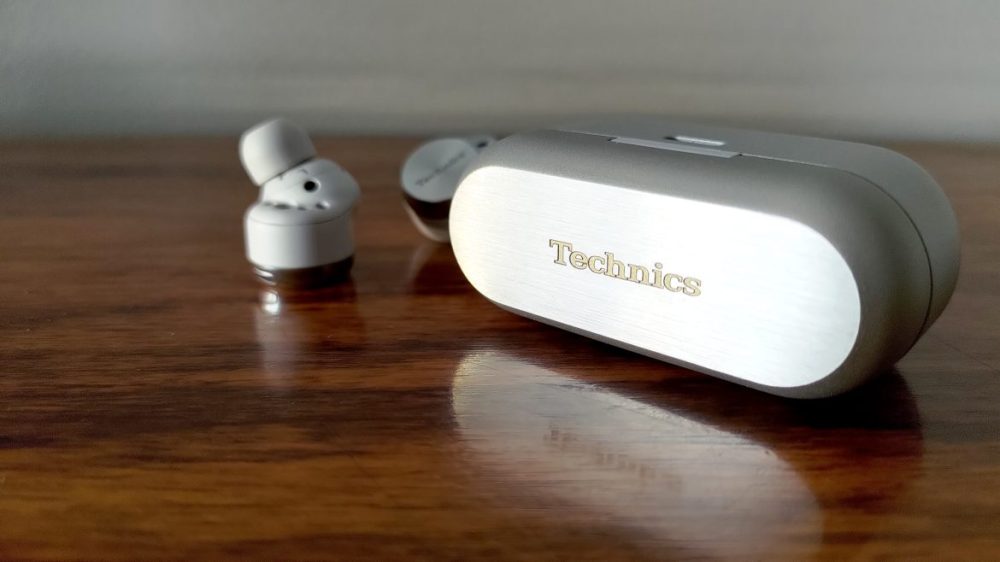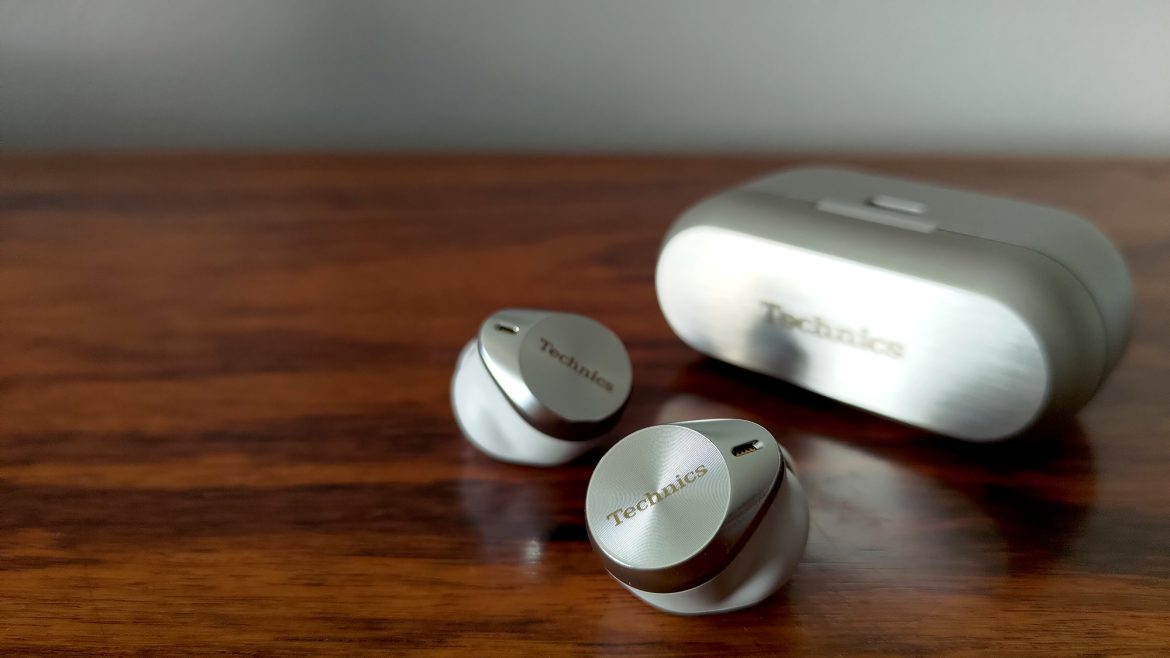TL;DR
The Technics EAH-AZ80 headphones are a serious contender, potentially dethroning the Sony WF-1000XM4. They deliver exceptional audio quality across diverse genres with a precise, detailed, and warm soundstage. The improved Technics app offers genuinely useful customization, including a triple-point connection and helpful earbud finder features. While noise cancellation is effective and the soundstage remains consistent across modes, the Ambient Sound mode could be clearer, and the default voice prompts are a minor detraction. Still, the overall package offers a premium and harmonious user experience, re-establishing Technics as a top-tier audio brand. Discover if they're the new king of TWS headphones by diving into the full review!
For a considerable time, we have been seeking a true competitor to the Sony WF-1000XM4, a model that has consistently performed well in tests globally since its release, including our own assessments at Senses. While several respected manufacturers have presented promising contenders, none have definitively surpassed the benchmark.
Until now.
The Technics EAH-AZ80, successor to the Technics EAH-AZ70 released three years prior, distinguishes itself across multiple performance aspects. Delivering exceptional audio quality right from the start, combined with a technically proficient and well-structured application, these headphones make a compelling impression. In our recent review of the Technics EAH-A800, we expressed some disappointment that this historically significant brand had not entirely kept pace with its competitors. However, the introduction of the EAH-AZ80 signifies Technics’ return to form, reaffirming its position as a brand synonymous with elegance and premium quality.
The Technical Overview
These headphones offer a battery life of seven hours, which extends to a total of 24 hours when used in conjunction with the charging case. Charging can be accomplished wirelessly or via the included USB-C cable. In terms of weight, each earpiece weighs approximately five grams, resulting in a barely noticeable presence in the ear. Pairing with a mobile device is a swift and straightforward process. It should be noted that our testing was conducted using a beta version of the Technics application, with the official release timed to coincide with the product launch. An LED indicator on the front of the charging case displays the case’s charging status, while a discreet red LED inside indicates the status of the headphones themselves. With these fundamental aspects covered, we will now focus on the more critical performance characteristics.

Soundstage of the Technics EAH-AZ80
Listening to a diverse range of tracks through the EAH-AZ80 proved to be a consistently enjoyable experience. The soundstage is characterized by its precision, detail, and comprehensive nature, exhibiting none of the problematic, noisy frequencies that were observed with the EAH-A800. The somewhat clinical and overly precise character encountered during that prior evaluation is absent in the EAH-AZ80. These headphones can deliver both warmth and immersion when appropriate, while retaining the capacity for cool, accurate reproduction when required.
A piece of music frequently used in our testing is Hans Zimmer – Buyer Beware. This selection presents a particularly intricate arrangement, demanding clarity across all frequency ranges, while simultaneously assessing the dynamic and acoustic capabilities of the headphones. The EAH-AZ80 performs admirably, rendering the bass with prominence and maintaining balance in the upper bass register, avoiding any muddiness or filtering.
The midrange is broad and possesses a warm quality without being excessive, effectively bridging the lower and upper frequency ranges. This is particularly evident in John Powell – Once there were dragons, another complex and demanding composition. The treble is also appropriately presented, providing sufficient detail to discern the nuances in Agnes Obel – Familiär, without becoming harsh or piercing. The reproduction is simply precise.
Switching to more rhythmic and direct music, such as Armin Van Buuren – Beautiful Life, yields similar results. The level of detail allows for the discovery of previously unnoticed elements, while the choruses deliver ample energy, naturally encouraging rhythmic engagement. This experience is mirrored when transitioning to Mötley Crüe – Kickstart my heart. The EAH-AZ80 exhibits versatility and performs well across a broad spectrum of genres.
The combination of detail and agile acoustic performance is particularly noteworthy. All elements are audible, no single aspect overpowers others, and the sound maintains a degree of smoothness despite its impactful presence.
The Technics App
Our previous experience with the Technics app was less than satisfactory, finding it somewhat disorganized. Navigating the predetermined options proved cumbersome, and selecting the desired setting was often challenging. However, with the latest update, Technics has successfully addressed these shortcomings, implementing significant improvements. The application now provides a range of customization options that are genuinely useful, rather than simply superficial features designed to inflate the perceived functionality. These are practical details that enhance the user experience, some of which will be discussed below.

A key feature is the introduction of triple-point connection, enabling simultaneous connectivity with up to three devices. Furthermore, when connecting to previously paired devices, users can customize the connection announcement, choosing options such as “connected to a smartphone,” “connected to computer,” or simply “connected.” This functionality is particularly seamless and efficient. The volume of the announcement voice can also be adjusted, a valuable detail for users who prefer a more subtle notification in quiet environments.
For users prone to misplacing their earbuds, the app offers two location features. Geographical localization provides the last known location of each earpiece, including the address and postal code. Once in the vicinity, the second function can be activated, emitting a distinct sound from the earpiece to facilitate its retrieval.
In terms of control customization, the touch controls on each earpiece can be fully programmed to individual preferences. The app supports single, double, and triple presses, as well as long presses, allowing users to leverage established muscle memory for intuitive control.
Playback Modes Technics EAH-AZ80
The headphones offer three standard playback modes: Noise Cancelling, Ambient Sound, and Off.
The active noise cancellation is effective, mitigating distracting ambient sounds. It offers several configuration options for fine-tuning the noise cancellation effect. With music playing, users can achieve a high degree of isolation from their surroundings. The headphones include a selection of different-sized ear tips to optimize fit and comfort. However, only sizes XS and S are offered in an extended variant, which is somewhat limiting.
Ambient Sound (hear-through) mode also functions well and can be adjusted using various parameters. However, the Sony WF-1000XM4 maintains a slight advantage in this area. Sony’s implementation effectively emphasizes treble frequencies to enhance speech clarity and awareness of surroundings. While the Technics EAH-AZ80 performs adequately, it lacks the same level of clarity as the Sony model. One appreciated detail is the automatic disabling of hear-through mode in windy or excessively noisy environments.
Notably, the soundstage remains consistent across all playback modes. The same level of energy, width, and detail is preserved regardless of the selected mode, a characteristic that is not always guaranteed.

Conclusion Technics EAH-AZ80
The Technics EAH-AZ80 headphones represent a highly successful product. We were impressed by nearly all aspects, with any shortcomings being relatively minor. The intuitive menus and customizable parameters streamline the user experience. An exceptionally high-quality soundstage can be achieved without extensive equalization adjustments, and all included features provide tangible value. The defining characteristic of the Technics EAH-AZ80 is its exceptional audio performance. While the additional features can be considered a bonus, their overall quality creates a harmonious user experience and establishes a new reference point in the premium TWS headphone category.
One area that Technics should address is the default voice prompts. Given the sophisticated design and overall polish of the product, the somewhat jarring quality of the voice prompts is noticeable. Addressing this issue and enhancing the clarity of the Ambient Sound mode’s treble frequencies would further elevate the overall experience.
In conclusion, we offer our sincere commendation.
Panasonic provided a test unit for this review. The provider of the materials has no editorial influence on our evaluations.

